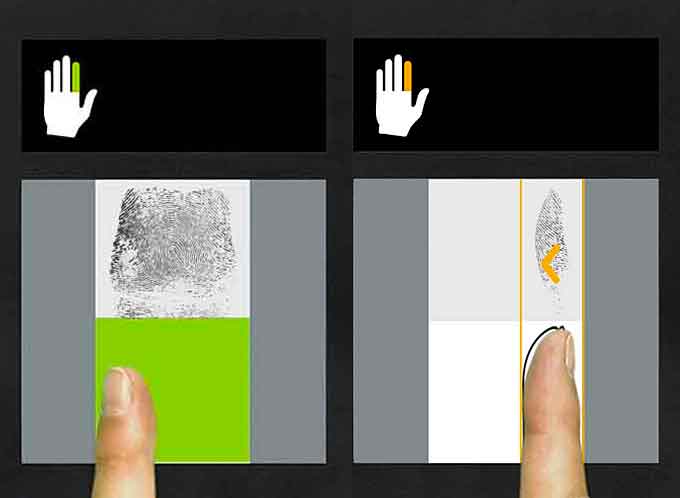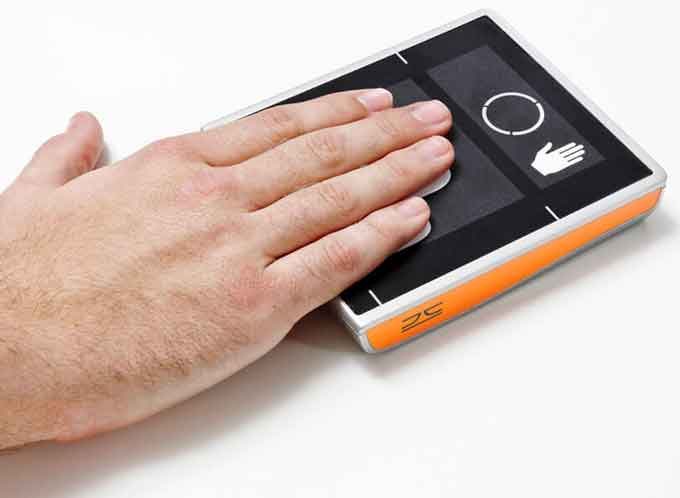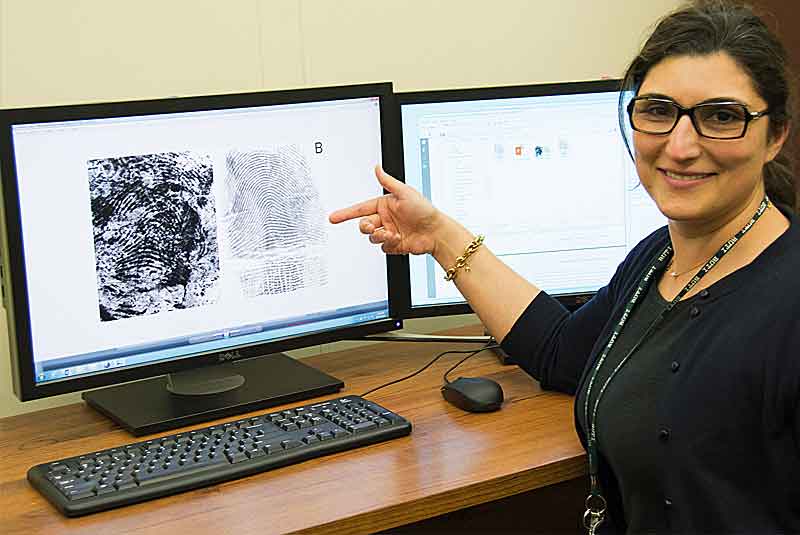
Fingerprint capture technology has advanced to the point where high-quality rolled prints soon might be obtained without the manual assistance of a trained device operator, according to a new report issued by the National Institute of Standards and Technology (NIST).
These advancements could help law enforcement collect information-rich prints more rapidly and economically.
 The document, NIST Interagency Report (NISTIR) 8210, Nail to Nail Fingerprint Challenge: Prize Analysis, details the methods used in a recent IARPA-sponsored challenge whose overall goal was to improve fingerprint capture technology.
The document, NIST Interagency Report (NISTIR) 8210, Nail to Nail Fingerprint Challenge: Prize Analysis, details the methods used in a recent IARPA-sponsored challenge whose overall goal was to improve fingerprint capture technology.
The Intelligence Advanced Research Projects Activity (IARPA) is an organization within the Office of the Director of National Intelligence responsible for leading research to overcome difficult challenges relevant to the United States Intelligence Community.
IARPA characterizes its mission as follows: “To envision and lead high-risk, high-payoff research that delivers innovative technology for future overwhelming intelligence advantage.”
IARPA funds academic and industry research across a broad range of technical areas, including mathematics, computer science, physics, chemistry, biology, neuroscience, linguistics, political science, and cognitive psychology.

Eight finalists from industry and academia took part in the competition’s finale, the results of which IARPA announced at a March 21 workshop.
NIST’s role was to design the experiment and evaluation criteria so that IARPA could determine the prizewinners.
The report details this background for organizations that may want to work on their own approaches to the problem, which is not yet fully solved despite the advances the challenge delivered.
“One of the competitors brought a solution that can provide images at the capture speed, reliability and typical quality level of the traditional, operator-assisted system,” said NIST’s Elham Tabassi, one of the report’s co-authors.
Obtaining a high-quality image of an entire fingerprint—from one side of the nail around the fingertip to the nail’s other edge, or “nail to nail”—is a demanding task.
It typically requires the assistance of a skilled operator who physically grasps and rolls the person’s fingers, a time-consuming process that can make the person feel awkward.

“Requiring a skilled operator in a high-speed environment like a port of entry is costly, and it can constrain print collection,” Tabassi said.
“Plus, for many civilian applications, plain finger impressions provide sufficient information for verification of identities, so many real-world applications end up taking plain fingerprint impressions instead.”
Plain impressions are the commonplace sort that only need a flat press of the finger, like on a modern smartphone.
While they are easier to obtain without assistance, they lack detail from the edges of the finger that can be important when searching through a database of prints taken from crime scenes, for example.

These unintentional (or latent) prints are often partial or off-center, showing the sides of a fingertip or bits that only a nail to nail scan would capture.
“The challenge’s overall results show that the winning device is ready to produce images,” Tabassi said.
“The remaining issue is how to ensure that the device can produce high-quality prints without the verbal feedback from a moderator.”
As the effort to develop a fully autonomous solution continues, the NIST report will serve as a resource for anyone who wants to design or perform a technology evaluation of fingerprint capture devices, Tabassi said.
It details the experimental design and the metrics on how to evaluate the fingerprint capture technology while highlighting the parameters and constraints research teams will need to consider to obtain useful answers.
(See the JENETRIC LIVETOUCH quattro in Action The most user-friendly FBI-certified ten-finger scanner. Courtesy of STIFT and YouTube)
“The report focuses on ensuring that future studies will be effective,” she said. “There are many questions you need to address concerning sample size, distribution of gender and profession.”
“You have to ask these questions or your results will be skewed toward one population group.”
 Tabassi added that raw fingerprint data obtained through the challenge will be publicly released for biometric research purposes.
Tabassi added that raw fingerprint data obtained through the challenge will be publicly released for biometric research purposes.
Specifically, NIST and IARPA will release a set of nail to nail baseline and latent fingerprints from 200 study participants who consented to making their fingerprints available. All the information that could connect a specific individual to a fingerprint will be scrubbed out.
To be notified when the data are ready for release, visit the N2N Fingerprint Capture Challenge website. Once available, researchers will be able to complete a web form and download the data directly.
Learn More…
IARPA Awards JENETRIC for N2N Fingerprint Challenge (See in Action)

















